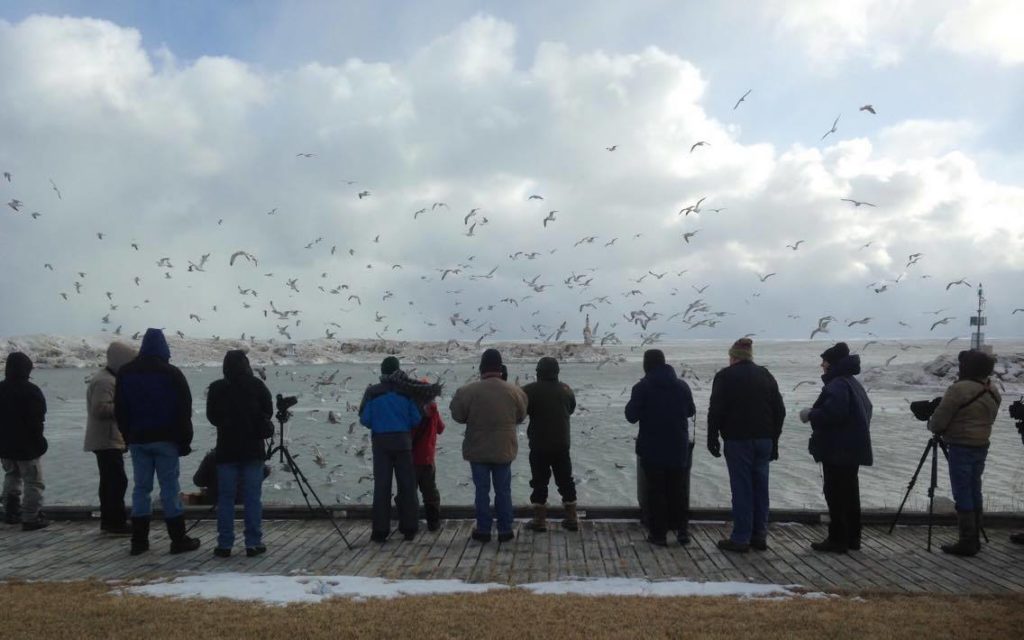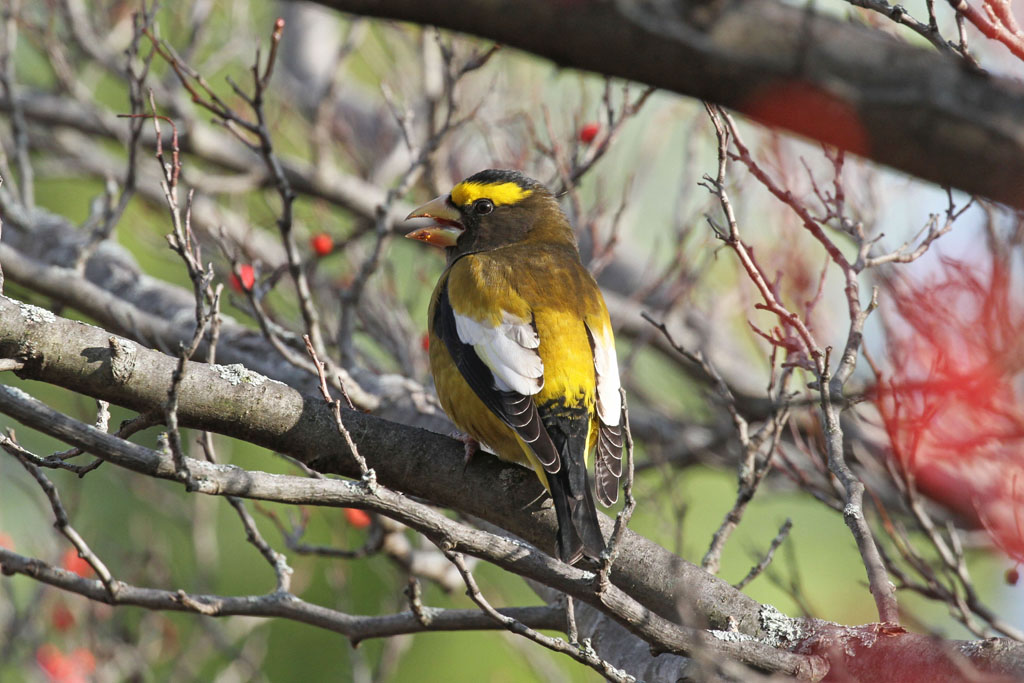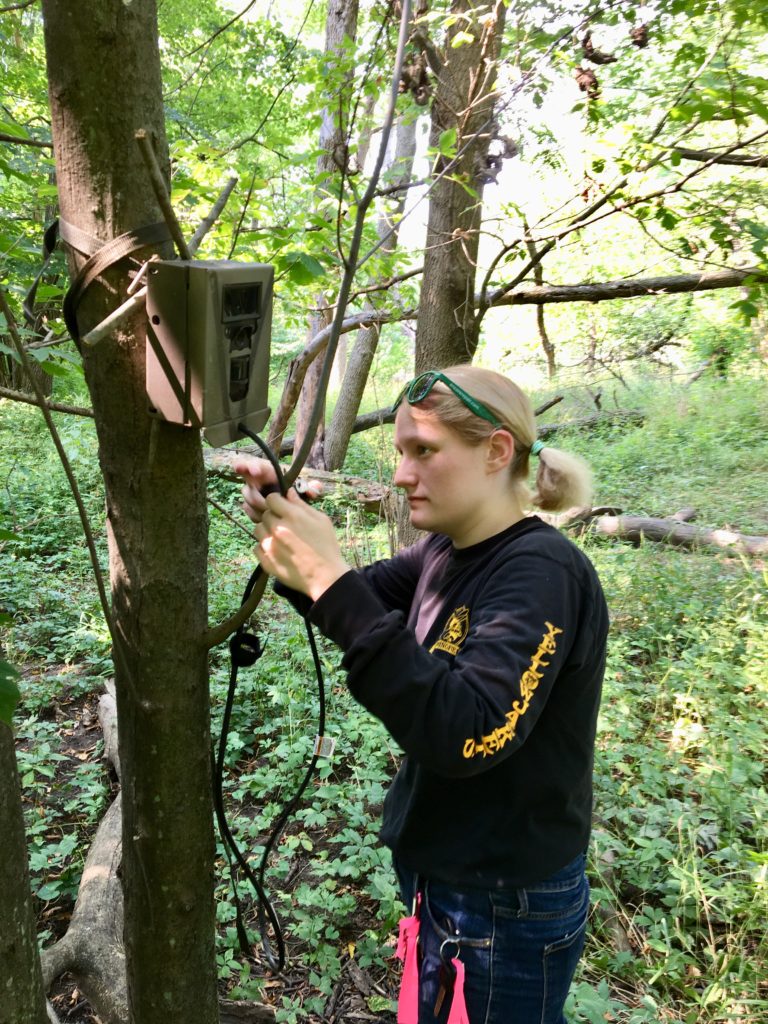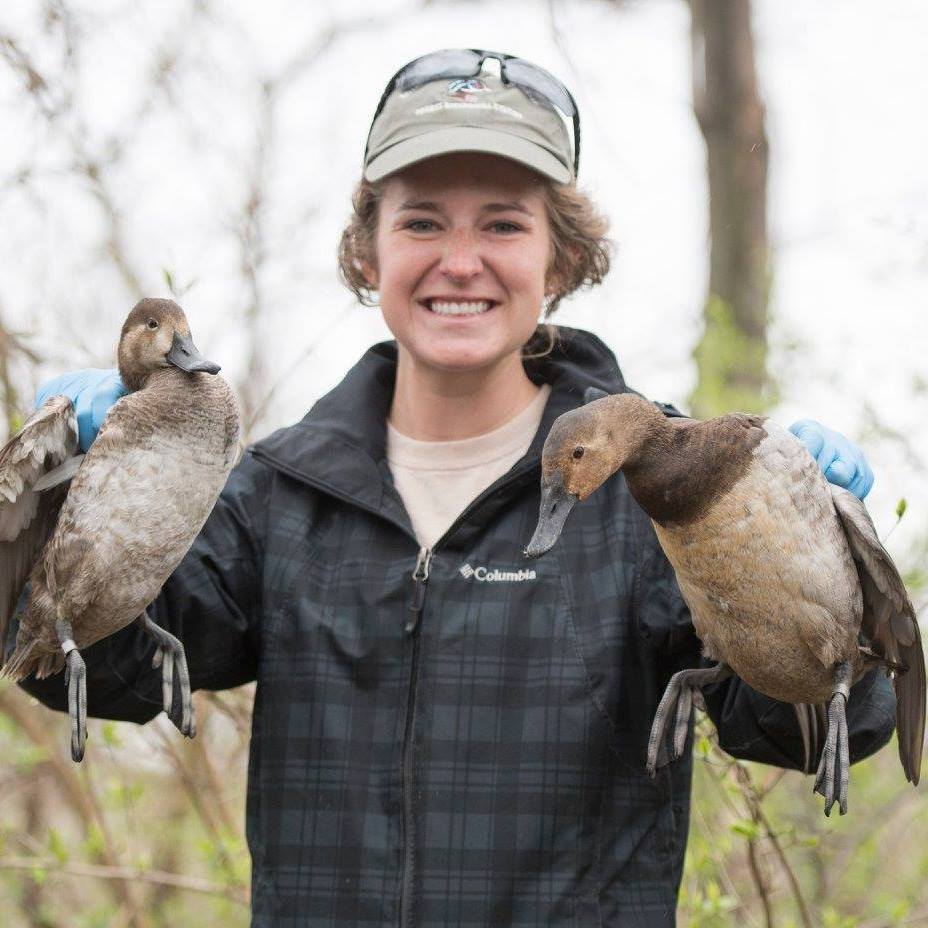Project Summaries & Abstracts
Mike Avara
The stopover and wintering behavior of Northern Saw-whet Owls in Illinois
It is becoming clear that there are far more Northern Saw Whet Owls (NSWO) migrating through Illinois than we ever imagined. Exactly what is happening during the fall and spring migration though, remains mysterious, and may not be accurately studied by using mist net captures. This is because many individual owls can be active during migratory periods without being caught in a net, and also because a mist net capture only gives one data point (unless that banded owl is recaptured). Radio telemetry on the other hand, can give continual location data on a single owl. Such transmitters will determine if a bird is actively moving, and whether it is still present in the area after transmitter attachment or has moved on. An ultimate goal is to uncover the factors underlying the patterns of activity of NSWO, particularly at migratory stopover habitats.
Project Abstract: The northern saw-whet owl (NSWO) is a small migratory owl that breeds in the boreal forests of North America but migrates every fall to Illinois. While much is known about this species on its breeding grounds, there is much less clarity about its behavior during migration and on its wintering grounds where it is much more secretive—seldom vocalizing and rarely seen. The goal of this project is to characterize the nature of NSWO fall and spring migratory behavior. This will require capturing owls during fall migration and attaching Motus tags near an extant tower in central and northern Illinois. We will analyze mist net capture rates, sex ratios of captured birds, migratory pathways as provided from Motus data beyond Illinois, and individual bird activity levels for the duration of migratory stopover and their association with changes in weather covariates. This research has the potential to advance our understanding of stopover behavior beyond basic banding station capture rates in providing higher resolution movement data for NSWO. In learning more about the timing and path of NSWO migration, humans would be more aware of their shared use of the landscape at a time and place when birds are more vulnerable.
Affiliation: University of Illinois at Urbana-Champaign
Project Location: Northern & Central Illinois
Project Goal: Research, Education/Awareness
Avi Berger
A Novel Approach to Investigating Developmental Changes in Eggshell Thickness
Most folks know that bird eggs have a wonderfully strong and practical shape, but did you ever think about the problems with eggshells that are too thick? Not only would hatching possibly be difficult but effective gas exchange during maturation of the embryo would be hindered. So, a graduate student at UIUC is exploring this trade-off between strong structure and embryological function in eggshells using MRI technology.
Project Abstract: My research investigates the interactions between eggshell morphology and embryo development in birds, up to and including the time of hatching. I am interested in the tradeoffs involved in having a mechanically protective shell and the effort involved in hatching from it. I seek to develop a non-destructive computed tomography (CT) scanning and imaging methodology to image live eggs from a diversity of taxa. The goal is to integrate shell curvature, microstructure variation, and fracture resistance across embryonic developmental stages. By enabling the characterization of 4 dimensional shell morphology without sacrificing the egg, this work could improve conservation efforts and contribute unique resources to 3D image repositories. Specifically, my work will investigate changes in the mineral microstructure of eggshells, variations in gas exchange, and acute local shell fragility relative to the development of the embryo. With the addition of my future research on the muscle physiology of embryos at hatching, the results may lead to new insights regarding the significance of hatching effort relative to the overall morphology of the egg and better inform our understanding of the evolution and diversification of bird eggs.
Affiliation: University of Illinois at Urbana-Champaign
Project Location: Champaign-Urbana
Project Goal: Research
Carlos Calzada
West Nile Virus Epizootic in the FMNH’s Bird Collection: Evidence for Pathogen-driven Selection?
In this novel study, scientists at the Field Museum plan to take advantage of their large collection of tragically window struck birds to answer the question of why some species recovered more quickly than others from the West Nile virus (WNV). So, they will compare the genetic makeup of 17 different species before and after WNV pandemic reached our area. Their hypothesis is that maybe immune system genes were more responsive in those species that rebounded more quickly after the WNV pandemic.
Project Abstract: The arrival of West Nile Virus (WNV) in 1999 and subsequent outbreak in North America significantly reduced the populations of an estimated 47% of bird species with some experiencing decreases in annual survival greater than 40%. A recent study was able to categorize the affected species as temporary or persistent, where the former rebounded to pre-WNV levels and the latter remain suppressed. The Field Museum’s Salvage Program collects window-killed birds in Chicago and can provide the samples necessary to conduct a natural experiment (i.e., pre- and post-WNV samples of the negatively affected bird species) to determine if pathogen-driven selection might explain why populations of some species have recovered. We propose to sequence whole genomes of 17 bird species at low coverage to perform genome-wide scans for positively selected genes. If pathogen-driven selection can partially explain why some populations have rebounded, genes associated with immunological function should show signatures of positive selection.
Affiliation: University of Chicago & Field Museum of Natural History
Project Location: Chicago, IL
Project Goal: Research
Mac Chamberlain
Social and genetic monogamy in the Brown-headed cowbird (Molothrus ater)
The much-maligned Brown-headed Cowbird is the subject of a study by a graduate student at UIUC using DNA fingerprinting of sperm taken from cloacal lavages of captured birds along with radio telemetry to learn about their mating strategies. This novel combination of methods will show whether a given female abstains, mates only with a single male or mates with multiple males. The ratio of degraded to recent sperm in the lavages will indicate whether females mate mainly at night in the communal roosts, or instead mate in the daytime when the birds travel in pairs or small groups. Finally, radio telemetry will be used to determine the social structure of the groups examining which males and which female individuals primarily interact in the roosts at night versus as a daytime pair or small group. Detailed knowledge of these bird’s mating systems is of importance to conservation biologists as well as evolutionary biologists.
Project Abstract: Traditional methods for studying monogamy in birds rely on genetic analysis of offspring coupled with behavioral observations, yet these methods pose challenges when studying brood parasites due to the dispersed nature of their egg-laying territories and diversity in their potential host species. This proposed study introduces a novel combination of cloacal lavages and radio telemetry to assess mating strategies and social structures in the Brown-headed cowbird (Molothrus ater) population at Kennekuk County Park in Illinois. Specifically, this study will determine the frequency and consistency of genetic monogamy, estimate the timing of copulation events, and examine correlations between genetic pairings and social interactions. Additionally, this project includes outreach activities targeting K-12 children to excite them about ornithology and promote conservation awareness. The proposed timeline spans from mid-May 2024 to summer 2025, including fieldwork, genetic analysis, and dissemination of results. This study employs innovative methods to investigate fundamental questions in avian ecology and enhance our understanding of brood parasitic species’ mating systems.
Affiliation: University of Illinois at Urbana-Champaign
Project Location: Kennekuk County Park, Danville, IL
Project Goal: Research, Education/Awareness
Avery Dart
Effects of extra-pair paternity on provisioning effort in male house wrens (Troglodytes aedon)
In a continuing study of infidelity in supposedly monogamous pairs of nesting birds, scientists at Illinois State University are examining the behavior of nesting house wrens. Their overall purpose is to better understand how chicks born outside of the “paired” couple, so called “extra-pair paternity”, benefits or perhaps costs females long-term reproductive success, and on the other hand, how it might alter male behavior. This is a very active area of research challenging long-held beliefs about monogamy in birds.
Project Abstract: Some animals form socially monogamous pair bonds in which a male and female mate and raise young together. Individuals within a socially monogamous pair bond may still mate with other individuals; this mating is defined as extra-pair mating (EPM). Extra-pair paternity (EPP) occurs when offspring arise from EPM. The benefits females receive from EPM are debated, but females may gain fertility assurance, access to better foraging grounds, and nest protection from males. There are also potential costs to EPM for females, including decreased paternal effort if social males suspect infidelity. I will investigate how male provisioning is affected by EPP in a well-established house wren study system. I was successful in conducting my research in this system in 2023, indicating that the upcoming 2024 field season will also be successful. I will record provisioning behaviors with cameras and then determine paternity using genetic markers. Males will be identified by the colored bands on their legs. I will test if males with more extra-pair young in their nests reduced provisioning rates. My research seeks to understand how EPP may benefit or cost females and how it relates to male behavior.
Affiliation: Illinois State University
Project Location: Mclean County
Project Goal: Research
Ramona Pollard
Mapping Birds for Restoration: Use of Passive Bird Monitoring to Create Targeted Restoration Efforts
The Nature Institute at Godfrey Illinois has a 500+ acre site undergoing restoration near the Mississippi river. They plan to use Birdweather monitors coupled with BirdNet to remotely census birds via songs and calls year around at six different habitats on their site. This information will be used to help study the success of their restoration activities over the long term.
Project Abstract: We are asking the Illinois Ornithological Society to fund a project that would provide us with artificial intelligence tools and resources to track and catalog the bird species that call our nature preserve home both year-round and during the migratory season.
Affiliation: The Nature Institute
Project Location: Godfrey, IL – Riverbend Area/St. Louis Metro Area along the Mississippi River
Project Goal: Research, Education/Awareness
Anastasia Rahlin
Investigating Marsh and Sedge Wren diets with fecal metabarcoding across a wetland urbanization gradient
As most birders know, habitat loss due to urban sprawl has dramatically altered wetlands available for many species of birds. In a comparison study between the diets of Marsh and Sedge wrens, scientists at the University of Illinois at Urbana-Champaign are pioneering a new method of diet investigation called “DNA metabarcoding” of fecal samples. This method is thought to be much more precise than historical methods of ascertaining what a bird is eating. This study is hoped to provide “a unique understanding of how insectivore prey communities change as wetland become more urbanized”.
Project Abstract: Illinois wetlands have undergone significant changes over the past century due to agricultural conversion and expansion of urban development, leading to concerns regarding the conservation of wetland bird obligates, such as Marsh Wrens and Sedge Wrens. These wrens serve as sentinel species for cattail marsh and wet meadow habitat, however how their diets vary across urbanization gradients is poorly understood and could be a critical piece of information linking food limitation and wetland bird breeding success to wetland characteristics to inform wetland management. We propose to investigate diets of Marsh and Sedge Wrens along an urbanization gradient using fecal DNA metabarcoding. We will determine wren diet composition, assess shifts in wren insect prey communities in marshes and wet meadows, and compare the dietary breadth of both wren species to each other and to available insect prey communities. We hypothesize that in smaller, more urbanized wetlands, we will see decreased insect diet diversity, and potentially will detect wrens specialize on available prey or undergoing prey switching. By using fecal metabarcoding to identify multiple insect taxa within fecal samples, we will determine composition of soft-bodied prey previously unidentifiable through traditional methods. Our research will inform wetland management strategies to conserve Illinois birds.
Affiliation: Illinois Natural History Survey, University of Illinois at Urbana-Champaign
Project Location: Chicagoland region and surrounding suburbs (Chicago Wilderness)
Project Goal: Research






